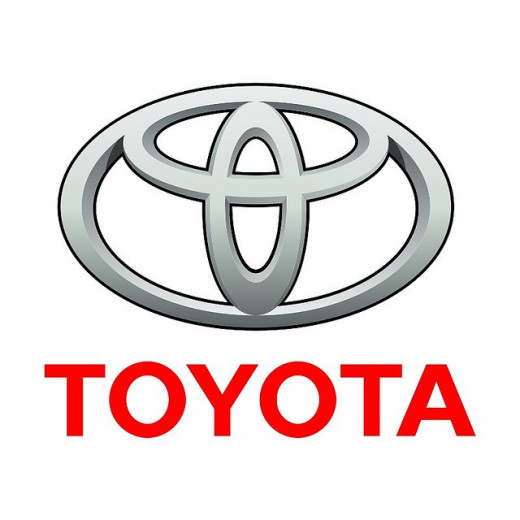Business Success, the Japanese Way
Business Improvement

Business Success
Business success is what every entrepreneur strives for. Kaizen is part of business success. The word kai means change. The word zen means good. Kaizen is a Japanese word that means change for the better or improvement. In the Japanese work ethic, it is defined as a continual effort by every member of the company, from the highest executive to the clerk. Each person should work to ensure that the company as a whole improves on its processes and systems.
The process of Kaizen is of the utmost importance to businesses in Japan. Through their adherence, their companies will outshine and outdo all other competitors. They work to eliminate imperfections and develop superior quality so that they will gain customer satisfaction.
The philosophy behind Kaizen is that change is for good things. Change helps businesses succeed over the long term. By making small changes that improve the overall way a business conducts themselves, it will eventually lead them towards being a winner. The Kaizen philosophy believes many small changes will be better for the organization than a few big changes. Business success will be achieved through these small gradual changes.
Business Success
Kaizen a Philosophy of Business Success
The implementation of Kaizen is not just the responsibility of one person. It is the responsibility of everyone who is part of the company. They each must contribute to making small improvements so that change effects everyone.
There are six elements to Kaizen: teamwork, individual discipline, good morale, quality circles, and suggestions for improvement.
Kaizen involves a systematic approach known as the “five S”. The idea is to create a foolproof way to set up policies, rules, regulations, and standards that create a healthy work environment and a positive work culture within the company. In this way, workers within the organization will all be happy and satisfied. They will not speak badly about their company. The company through this process will be well organized, highly productive, and produce good results. The employees feel a connection to the company they work for.
Learning about the five S:
-
Seiri - which means to sort out and keep things organized. Things should be labeled as - necessary - critical - most important - not needed now - useless, etc. By throwing out what is useless, keeping what is needed, and paying attention to what needs to get attention, things will be taken care of as they should be.
-
Seition - means to organize. The idea is when things are organized, less time will be used to look for things. If everything has a place, then it must be kept in its place.
-
Seiso - means shine the workplace. Keeping the work environment clean, and uncluttered, and putting papers can in folders and files, the areas will be easier to work in.
-
Seiketsu-seiketsu means standardization. Within a company, there should be rules, policies, and standards to achieve superior quality.
-
Shitsuke means self discipline. Employees all need to respect and abide by the organization’s policies and rules. By following work procedures, everyone will have a sense of pride in their company.
Toyota, a Model of Business Success

Toyota and Kaizen Philosophy
Kaizen is philosophy that focuses on constant betterment by eliminating waste and solving problems early on. It’s origins begin with Toyota and post World War II. Japan was devastated after World War II, and so was most of its industry. Japan needed to rebuild its country and its business in order to become a financial power in the world.
Taiichi Ohno was an engineer at Toyota. He wanted to improve efficiency of the assembly lines at their automobile factories and to become more competitive with the larger American automobile manufacturers. After he was sent to the United States to gain insight into machine shops and many types of businesses in the U.S., he went back to Japan with new ideas and a destined strategy. Ohno, with his managers came up what is now known as the Toyota Production System. It was a method of efficient manufacturing that was designed to give Toyota a bigger advantage in productivity and quality control over the America’s Big Three car manufacturers. Ohno’s idea was to not follow the assembly line method that American cars were using. He noticed that there was much waste and inefficiency in the way company’s like Ford Motor Company handled their production lines. He liked the way supermarkets used the idea of minimum inventory, and applied this recommendation to Toyota and the way they would make cars. He understood that quality control was an integral part of making a company more efficient.
To this day, Toyota encourages constant improvement in the way they do things, and to work towards a model of total efficiency. Toyota does not hold excess inventory, so that they do not need mor space than necessary. The factories order only what they need and their coordinate their orders so that the products get to the plants as they require them.
This method worked as well as they believed it would have, putting Toyota in the position as an industry leader. They became a model of manufacturing for other types of production and for many other industries. Their innovation set the stage for a whole new way of thinking and conducting business.
Small and Big Business Success
Additionally, the philosophy of Kaizen makes the employees involved in ways to improve things, and prevent problems from occurring within their own department.
Kaizen can be applied to big companies like Toyota, and to small companies and to individuals as well. By applying the fundamental philosophy to anything you do, you can make small improvements that will lead to big changes. By constantly looking at what is not working as well as it could, and to try to overcome obstacles, changes for the good can be accomplished.
The Kaizen way of thinking is that problems are opportunities. When excuses and rationalizations are used, not much progress or change will be made.Looking to solve problems increases the strength of a company. Instead of trying to cover up the problems, or turning the tables, which only temporarily takes the focus off of this issues and leads to the illusion that the issue has gone away, the Kaizen philosophy encourages recognition of the problems so they can be solved. Wasted time, energy and resources diminishes production and detracts from improvement. Kaizen works on the process so that improvement will come about. Some companies think of results as the primary way towards a desired outcome. But if a good process is set in motion including time management, discipline, development of skill, communication, efficiency, participation, morale boosts, and accountablitliy, employee satisfaction, quality, and productivity will improve.
The idea is that change happens incrementally. Changes on a small scale will result in overall changes that matter for the big picture. Through feedback, avoiding misdirection, and encouraging the procss of small improvements will lead to revolutionary change and business success.
The History of Toyota
Ways to Apply Kaizen to Your Business
Kaizen is a regular routine for those who apply it. It can be and is applied on a broad level to any business of any size. It can be applied to any area within a company and for many different purposes including, efficiency, safety measure, customer service and quality, and interaction with outside vendors. It involves all employees, and suggestions from all.
Kaizen fundamentals involve keeping costs low, production high, while keeping in mind that quality is what counts. Integral to all this is training and educating employees.
Sometimes it is as simple as improving work efficiency by making sure needed materials are within easy reach for those who need these supplies. Sometimes it could be making improvements to the handling of materials. Looking for ways to save on labor, or reducing expenses is a way to implement Kaizen.
Even adding a customer feedback, or an easy way for people to contact the company on a website is a way of using Kaizen to improve business.
Ways to apply Kaizen to your business:
- matching the right workers with the right job.
- creating an atmosphere where there is good relationships with other workers
- making sure employees are qualified to do the work they are assigned to do.
- setting standards within the company for efficiency and acceptability
- encouraging employees to be problem focused and alert for potential problems, waste and inefficiency.
- conscientiousness
- being solution oriented
- making sure the equipment is adequate for the job
- take care of the equipment before it becomes a problem
- checking materials, standards, and quality
- keeping suppliers to a minimum, but not so small that your company would be affected by problems a supplier has.
- making sure there is adequate storage for materials
- handling materials in an efficient way
- finding an efficient way to provide a good product or service
- efficient production and maximization of production
- set up the work environment so there is miminum disruption of work flow
- good communication between all employees and all level of management
Improvements and Business Success

You Can Achieve Business Success
Business success is dependent upon many factors. Kaizen is a philosophy that gives guidelines towards gradual improvement. In this fast paced technological world, business survival is dependent on routines that lead to looking inward to achieve meaningful change in an ongoing basis. .
From the smallest of business to the biggest, it is a global marketplace that involves changing and evolving to keep up with competitors.
Most businesses make improvements as a reaction to things that need to change. Kaizen uses a proactive approach that looks for ways to improve before any issues arise. Being innovative, creative, and insightful are just some of the ways Kaizen can be applied to business success of all sizes.





